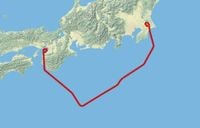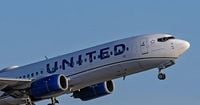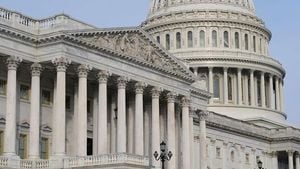Travelers aboard United Airlines Flight 32 experienced a harrowing ordeal on September 12, 2025, when their Boeing 737-800, en route from Narita International Airport near Tokyo to Cebu in the Philippines, was forced to make an emergency landing at Kansai International Airport in Osaka, Japan. The catalyst? A cockpit warning light that indicated a potential fire in the aircraft’s cargo hold—a scenario that no one wants to imagine while cruising high above the Pacific Ocean.
The drama began roughly 50 minutes into the flight, according to aircraft-tracking data cited by Newsweek, with Flight UA32 departing Tokyo around 5:40 p.m. local time. The plane, carrying between 135 and 142 passengers and crew, was already over the Pacific when the warning triggered an urgent response. Pilots wasted no time, turning the aircraft back toward Japan and initiating emergency protocols that would soon involve a full-scale evacuation upon landing.
As reported by Kyodo News and confirmed by the Ministry of Land, Infrastructure, Transport and Tourism, the Boeing 737 touched down safely at Kansai International Airport at approximately 7:08 p.m. local time. What followed was a scene straight out of an airline safety demonstration: all passengers and crew evacuated the aircraft using emergency slides, a procedure that, while designed for safety, carries its own risks. Footage aired by Japan’s NHK television showed passengers sliding down escape chutes to the tarmac, while emergency vehicles surrounded the plane as a precaution.
Despite the tense situation, the evacuation was largely successful. However, two female passengers sustained minor injuries during the deplaning process and were transported to local hospitals for treatment, as confirmed by both United Airlines and local fire departments. Thankfully, their injuries were not life-threatening. A passenger in his 40s, interviewed by NHK, recounted, “I was a little unsettled, wondering what the reason was, but there was no sign of confusion. After the emergency landing, we were instructed to evacuate, which made me panic. It took about five minutes to evacuate.”
Uncertainty lingered about the cause of the incident. While the cockpit warning indicated a potential fire in the cargo hold, initial inspections by United Airlines maintenance teams revealed no evidence that an actual fire had occurred. As a United spokesperson told Newsweek, “Upon initial inspection by maintenance, there is no indication a fire occurred.” Japanese aviation officials echoed this sentiment, stating that investigations were ongoing to determine whether there had been any fire or smoke at all. Footage from NHK showed no visible flames or smoke emanating from the aircraft, deepening the mystery.
The emergency landing had immediate operational consequences for Kansai International Airport, which serves the cities of Osaka, Kyoto, and Kobe. Both of the airport’s runways were temporarily closed to allow for emergency response and safety checks, according to the Ministry of Land, Infrastructure, Transport and Tourism. This caused delays for other flights, though one runway was reopened a short time later to resume limited operations.
While the incident was handled swiftly and professionally, it served as a stark reminder of the ever-present risks associated with air travel—especially those tied to modern technology. Earlier in the week, the U.S. Federal Aviation Administration (FAA) had issued a Safety Alert for Operators regarding the dangers posed by lithium batteries stored in passenger compartments. The FAA warned, “Lithium batteries (including power banks and portable chargers) can act as ignition sources and potentially start onboard fires. Lithium batteries stored in passenger overhead bins and or in carry-on baggage, may be obscured, difficult to access or not readily monitored by passengers or crewmembers.” While there’s no official word yet linking the United Airlines incident to lithium batteries, the timing of the alert and the nature of the warning light have raised questions among aviation experts and regulators alike.
The flight’s manifest also became a point of minor confusion in the hours following the landing. Some sources, including Kyodo News and NHK, reported 142 people on board, while United Airlines and Reuters cited 135 passengers and seven crew—a total of 142. Such discrepancies are not uncommon in the immediate aftermath of emergencies, as officials scramble to verify details amid the chaos.
Passengers, once evacuated, were bused from the tarmac to the terminal—a detail confirmed by United Airlines in their official statement. For many, the ordeal ended with relief, gratitude for the crew’s professionalism, and perhaps a newfound appreciation for the safety features often demonstrated but rarely used. The two injured passengers were the only reported casualties, and their injuries were described as minor.
Officials from Kansai Airport, local police, fire departments, United Airlines, and the Japanese transport ministry were not immediately available for further comment outside normal business hours, as reported by Reuters. Yet the incident quickly drew attention from international media, with outlets such as the Associated Press, Boston Herald, and Devdiscourse all covering the emergency landing and its aftermath.
For United Airlines, the event was a test of its emergency preparedness and communication protocols. The airline’s prompt statement to Newsweek emphasized passenger safety and the absence of a confirmed fire: “The aircraft landed safely and passengers deplaned via slides. Customers have been bused to the terminal. Two passengers have been transported to local hospitals with minor injuries.” The company also confirmed that maintenance teams would conduct a thorough investigation to determine the cause of the cockpit warning.
The incident comes amid a year of heightened scrutiny for the aviation industry, with concerns about aircraft safety, pilot training, and the growing prevalence of lithium-powered devices on board. While the FAA’s recent alert was not directly tied to this event, it underscores the broader context in which airlines must operate—balancing technological convenience with the imperative of safety.
As investigations continue into the true cause of the cockpit warning, passengers and crew of United Airlines Flight 32 can take solace in the fact that, thanks to quick thinking and effective emergency procedures, a potentially disastrous situation ended with only minor injuries and a story to tell. For Kansai International Airport, the event was a reminder of the importance of readiness and coordination between airlines, emergency responders, and airport staff.
In the end, while the sight of passengers sliding to safety on a quiet Friday night in Osaka was unsettling, it was also a testament to the resilience and professionalism that define modern air travel. The lessons learned will no doubt inform future safety measures, ensuring that the next time a warning light flashes at 30,000 feet, everyone on board is ready for whatever comes next.






